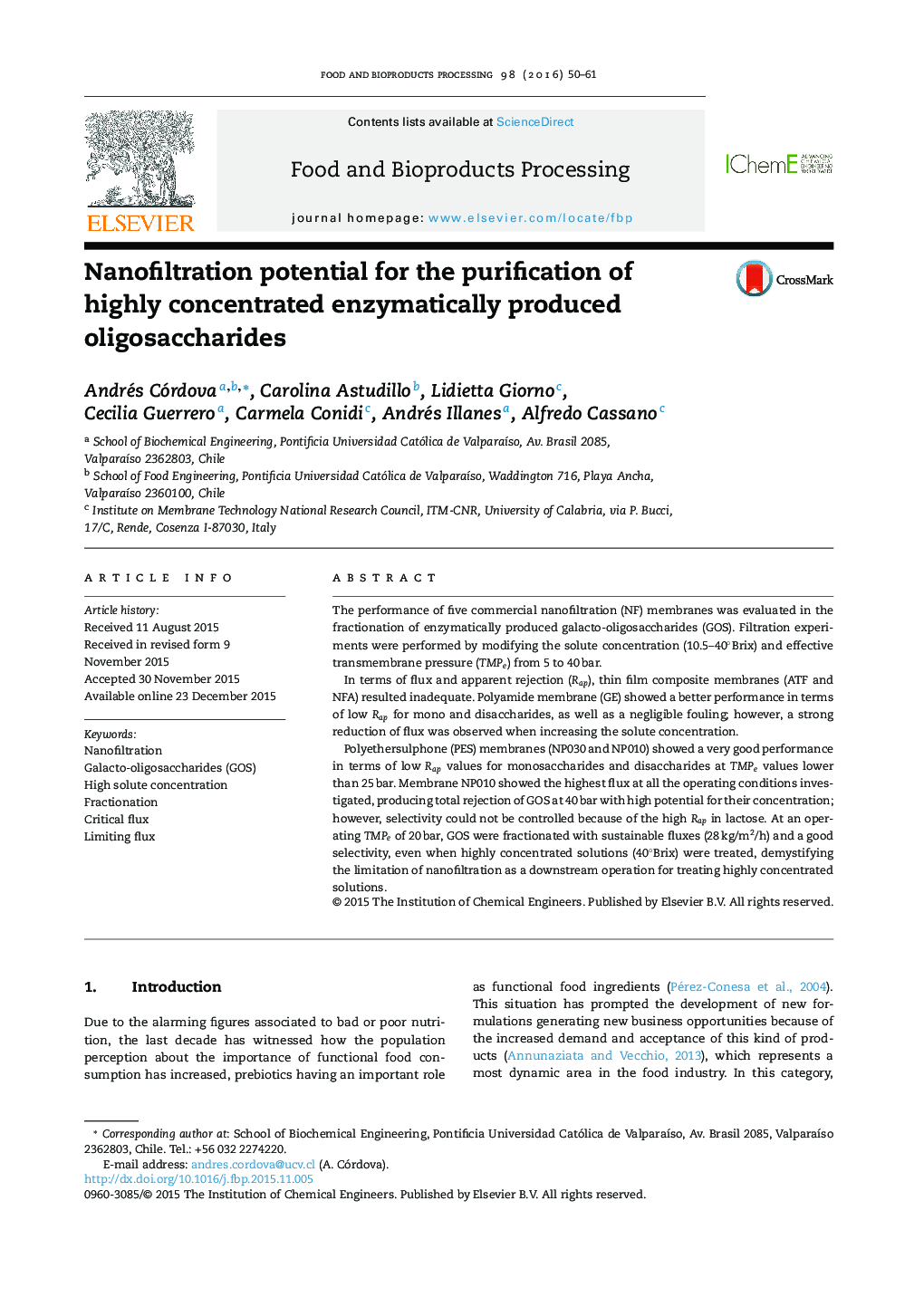| Article ID | Journal | Published Year | Pages | File Type |
|---|---|---|---|---|
| 18857 | Food and Bioproducts Processing | 2016 | 12 Pages |
•Solute concentrations from 10 to 40°Brix were nanofiltered from 5 to 40 bar.•Membranes ATF and NFA were not suitable for processing concentrated GOS solutions.•Membrane GE showed high flux recovery due to fouling but poor selectivity for GOS.•Membrane NP010 was adequate for fractionation of GOS solutions at 40°Brix and 20 bar.•NF is a promising alternative for the purification of concentrated GOS.
The performance of five commercial nanofiltration (NF) membranes was evaluated in the fractionation of enzymatically produced galacto-oligosaccharides (GOS). Filtration experiments were performed by modifying the solute concentration (10.5–40°Brix) and effective transmembrane pressure (TMPe) from 5 to 40 bar.In terms of flux and apparent rejection (Rap), thin film composite membranes (ATF and NFA) resulted inadequate. Polyamide membrane (GE) showed a better performance in terms of low Rap for mono and disaccharides, as well as a negligible fouling; however, a strong reduction of flux was observed when increasing the solute concentration.Polyethersulphone (PES) membranes (NP030 and NP010) showed a very good performance in terms of low Rap values for monosaccharides and disaccharides at TMPe values lower than 25 bar. Membrane NP010 showed the highest flux at all the operating conditions investigated, producing total rejection of GOS at 40 bar with high potential for their concentration; however, selectivity could not be controlled because of the high Rap in lactose. At an operating TMPe of 20 bar, GOS were fractionated with sustainable fluxes (28 kg/m2/h) and a good selectivity, even when highly concentrated solutions (40°Brix) were treated, demystifying the limitation of nanofiltration as a downstream operation for treating highly concentrated solutions.
